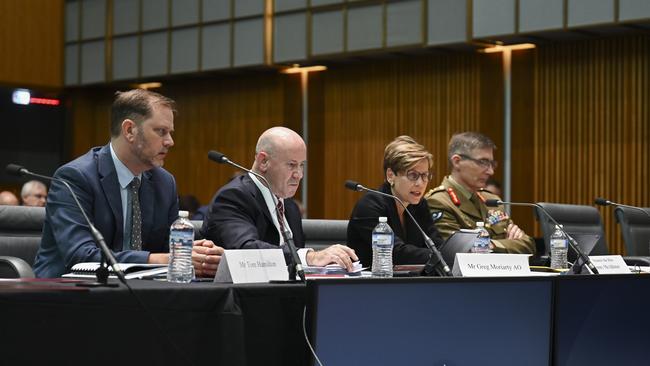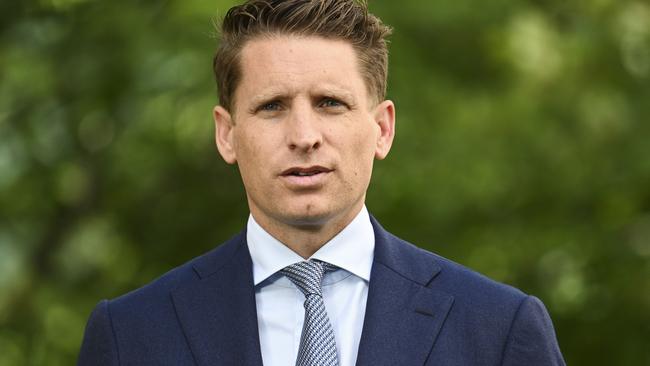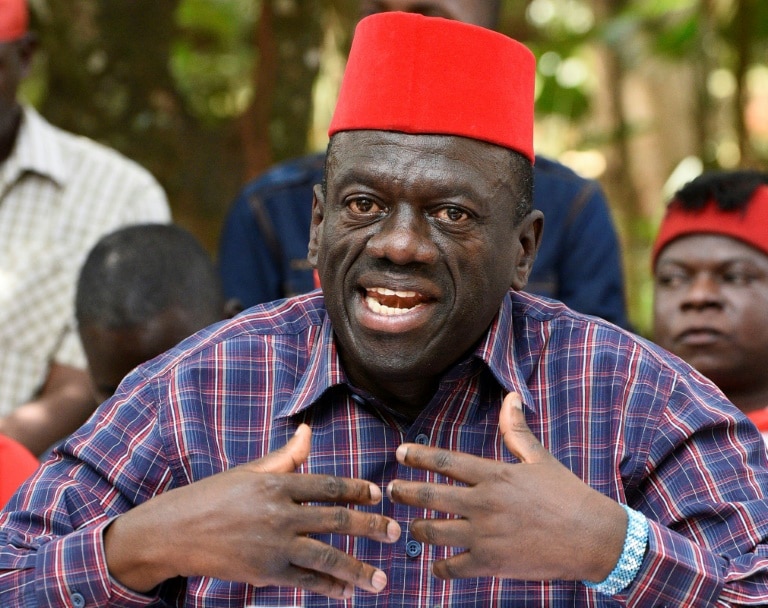Taipan pilots flew despite ‘risk’ assessment from internal ADF testing
The helicopter involved in a fatal military training exercise last year has come under the microscope again.

The Coalition and Greens are demanding answers after it was revealed defence personnel on-board the now-defunct Taipan helicopter fleet were flying with equipment deemed to carry an “increased risk” in certain situations by internal testing.
Pilots on the military aircraft were using a helmet-mounted display system that one test had deemed posed such a risk during a “degraded visual environment without a visual horizon” before a fatal incident involving navy personnel.
Under questioning from Greens defence spokesman David Shoebridge during senate estimates on Wednesday, defence officials said that was just one of numerous tests the navy had undertaken in assessing risks, and concerns were “worked through” to ensure the equipment was “safe and fit for use”.
Four army personnel were killed last July when their MRH-90 crashed off the Queensland coast while carrying out a night-time training exercise.
The fleet was immediately grounded and retired.
Officials said the Army Aviation Test and Evaluation Section flight test report for the helmet-mounted software’s latest version had indeed highlighted a risk, noting there was ambiguous display of flight information under certain circumstances that may be non-compliant.
They said that was “one input” considered in the context of the system that operates to ensure airworthiness.
“It has absolutely been put into the system and certified … to ensure that it was safe for our people to use as part of the defence aviation safety framework,” an official said.

Opposition defence spokesman Andrew Hastie said the revelations were “very concerning”, and demanded answers.
“A lot of the questions (in estimates) were taken on notice, and we’re going to interrogate those answers very closely,” he said.
The army chief later told senators that initial investigations into the fatal helicopter crash confirmed both engines were functioning on the Taipan when it went down.
Lieutenant General Simon Stuart said investigations were continuing.
“The engines were functioning normally, that’s a fact, but drawing interference from that around broader safety issues is not what we are doing, nor should anybody else,” he said.

Meanwhile, the army is adamant it would be impossible to simply reassemble the retired Taipan fleet, despite the repeated requests of Ukraine, because many of the parts are no longer airworthy.
Former engineers have offered to restore the aircraft to help Ukraine, but Major General Jeremy King told a Senate estimates hearing on Wednesday that work had begun to strip the aircraft had begun almost immediately after the fleet was retired.
“The aircraft themselves and many of the components that have been identified as not being available for disposal or reuse no longer sat inside that airworthiness framework,” he said.
“The perception that we could simply just reattach those components to these aircraft is not true.
“We have not had an airworthiness framework around those air frames for nearly five months.”
But Mr Hastie said officials had spoken about the overall safety of the helicopter.
“We’ve got defence running lines prior to today that we couldn’t give Taipans to Ukraine, and now we’ve learned that we could,” he said.

Earlier, the defence force conceded it was taking about 10 months for a new recruit to join the army from the time they sign up.
“The length of time taken to recruit a person has been in the order of 300 days,” the ADF’s chief of personnel Lieutenant General Natasha Fox said.
The army has entered into a new contract with a recruitment contractor to get that down to a target of 100 days.
“I have an additional task to accelerate recruiting and make that faster than 100 days. That includes all the medical, psychological and security checks,” she said.
Earlier, Chief of the Defence Force Angus Campbell revealed the ADF was understaffed by more than 4300 personnel, at a time when it is trying to significantly expand.
“Inflow rates remain below the level required to maintain our current force,” he said.
Mr Hastie, a former defence force member, said Australia “needs to do a better job” of getting people into uniform if they want to serve, and suggested winding back some barriers.
“We have a very, very high risk threshold for people trying to get into service, and we need to lower that,” he said.
Originally published as Taipan pilots flew despite ‘risk’ assessment from internal ADF testing




